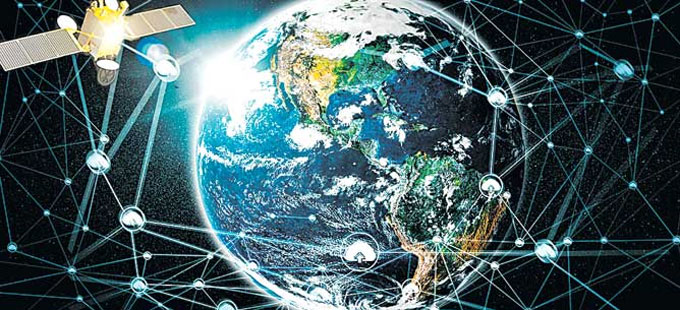
expanding to more remote areas
COWith no working conditions in schools, everything has shifted towards online classes. Signals in the village were perfect and the students had to climb mountains, hills, trees and mounds. Parents are a little worried about where their kids will fall. The lack of proper cell towers and cable broadband internet services in all villages is the reason for the plight of the students. The Supreme Court recently ruled that the digital gap is undermining children’s right to education in rural and tribal areas and the central and state governments must take immediate action to rectify the situation. Satellite Internet will solve these problems in the coming days.
Priority is given to villages
To bridge the digital gap, the Central Government launched the Digital India program in 2015. As part of this, it is planned to provide optical fiber broadband facilities to 2.50 lakh gram panchayats in the country by 2023 under the BharatNet programme. So far 1.78 lakh panchayats have been connected. By 2020, half of the country’s population and 70 percent of the rural population will not have internet. As of August 2021, only 2.43 crore people in India have access to cable broadband. They are almost all urban dwellers. Efforts are on to provide broadband service in villages through cell towers and fiber optic cables. StarLink and OneWeb, on the other hand, together provide Internet access through satellites orbiting the Earth. That’s why the Amazon company will also be in the ring. Mobile Internet requires a cell tower and broadband requires a cable. Awami does not want satellite internet broadcasts. If a satellite antenna, modem is sufficient. Radio waves or laser rays from satellites first reach the Network Operations Centers (NOCs) on Earth. From there access consumer devices. Satellite Internet services reach the speed of 100 to 150 Mbps in rural and remote tribal areas. Starlink is a leader in the competition for satellite Internet services. StarLink, a subsidiary of the Elon Musk rocket company SpaceX, one of the world’s biggest giants, will provide internet services with 12,000 satellites located around the Earth. Of these, 1,700 satellites have already been launched into orbit, providing satellite internet access to millions of people in 14 countries. Bharti Airtel, a joint venture between the British government and OneWeb, has already launched 322 satellites. Another 648 satellites will be launched into orbit next year. Starlink and OneWeb are preparing to launch satellite internet services in India by the middle of 2022.
To get a satellite broadband connection in India, one has to pay Rs 1,58,000 in the first year. This includes Rs 37,400 for the purchase of antenna dish, stand, WiFi router and Rs 7,425 for monthly subscription. 1,15,000 from next year. Starlink India director Sanjay Bhargava said that Starlink will primarily focus on providing internet services in villages. Asked whether villagers can spend thousands of rupees to get a Starlink connection, Bhargava said USO funds paid by telecom companies, government grants and funds under corporate social responsibility would help. Starlink is seeking tie-ups with government agencies such as BharatNet and RailTel as well as private telcos such as Reliance Jio and Vodafone Idea to provide low-cost services to the rural population. Starlink plans to sell two lakh connections by December 2022, of which 80 per cent will go to villages. Bhargava said that Starlink will initially provide free internet to 100 schools in and around Delhi.
need for alliance
Satellite Internet services are not only expensive, but also have meteorological problems. When it rains and the sky is cloudy, the radio waves make it difficult for the antenna to receive satellite net services. If satellite broadband companies partner with telecom operators on the ground, the range of services will increase and prices may fall. OneWeb has announced that it will tie up with a local telecom operator in each of its operating countries. Starlink will follow the same path. On the other hand, the Government of India is yet to take a final decision on the auction or allotment of telecom spectrum. The new space telecommunications policy announced by the Government of India regarding satellite broadcasting in near-Earth orbit is likely to clarify. However, satellite broadband should not be limited to providing internet in villages. This will be important for 5G and Internet of Things (IoT), which will be the lifeblood of the country’s economic growth in the coming days.
commercial services coming soon
Starlink and its parent company SpaceX have started booking satellite broadband connections in India without obtaining any permission from the Government of India. Around 5,000 Indians pre-booked the Starlink connection by depositing $99 (Rs 7,400). On that the Government of India has sent a notice to Starlink. Union Minister of State for Communications Devusinh Chouhan recently told the Lok Sabha that Starlink had asked them to stop pre-booking and apply for all permits and licenses required to start services on a commercial scale in India. Starlink sources said they will apply for the commercial license by January 31, 2022 and have already applied for the pilot licence.
– Kaiser Adap





